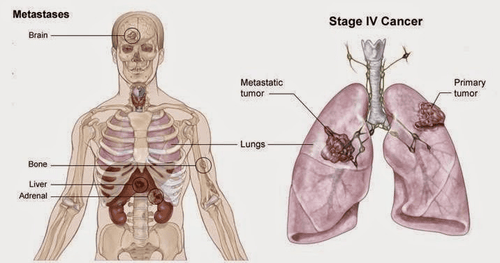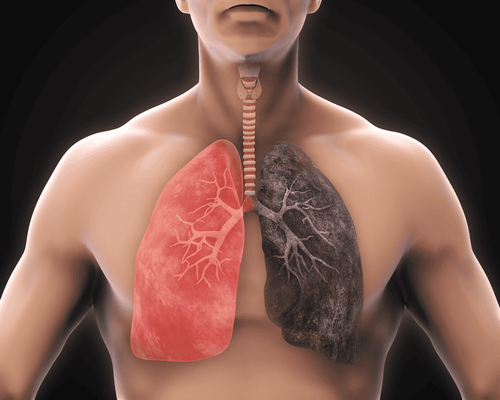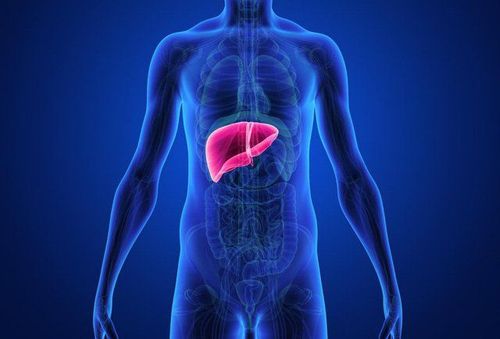This is an automatically translated article.
Lung cancer metastasizes to bone causing pain, negatively affecting patients' daily activities. At this stage, the treatments only help the disease to be in remission, not able to completely destroy the cancer cells.1. What is bone metastatic lung cancer?
Lung cancer metastasis is a condition in which mutated cells in the lung spread to different parts of the body such as bones, liver, brain, adrenal gland,... Cancer cells from the lungs spread to the bones through the bloodstream or lymphatic vessels. What stage is lung cancer with bone metastases? This condition occurs in 30-40% of patients with stage 3 or 4 lung cancer.

Ung thư phổi di căn xương thường gặp ở giai đoạn 3 - 4
Lung cancer metastasizes to bones mainly in the bones such as:
The spine, especially the vertebrae in the chest and lower abdomen. Pelvis. The bones in the arms and legs (the bones of the feet and the femur).
2. Signs of bone metastases lung cancer
When lung cancer has metastasized, the patient will experience specific symptoms at the location where the cancer cells have spread. Specifically, if lung cancer cells metastasize to the bone, the patient is likely to have the following symptoms:
2.1 Bone pain
Pain is the first symptom and also the most basic complication of stage 4 bone metastatic lung cancer. The patient will feel the initial pain as if the body is under strong impact or muscle tension. However, the pain will become more and more severe. If bone metastases are in the arms and legs, the pain is worse when the patient moves. If lung cancer cells spread to the spine, the patient will have more pain at night and after lying down.

Đau xương là biểu hiện thường gặp ở bệnh nhân ung thư phổi di căn tới xương
2.2 Compression of spinal cord
Secondary tumor growing in the bone, compressing the spinal cord can cause pain when walking, moving, causing itching or weakness in the legs. If the spinal cord is severely compressed in the lower spine area, the patient is at risk of bowel and bladder deterioration. This is a medical emergency that, if not treated promptly, can leave permanent damage to the patient.
2.3 Fractures and increased blood calcium levels
In some cases, a pathological fracture is the first sign of lung cancer with bone metastases. This is because cancer cells take away nutrients, replacing healthy bone tissue, making bones weak and fragile. A broken bone can happen without any serious trauma.
However, the patient still has measures to recognize this symptom. Specifically, when bone is broken down, calcium will be released directly into the blood, increasing calcium levels in the blood, causing manifestations such as: nausea and vomiting, confusion, frequent thirst, muscles weak,... Combined with cancer, the patient's movement will be hindered by fractures. This symptom increases the risk of thrombosis and pulmonary embolism.

Tế bào ung thư từ phổi di căn tới xương làm xương yếu, dễ dẫn tới gãy xương
3. Methods of treating bone metastatic lung cancer
Treatments for lung cancer metastasized to the bone mainly help the disease to be in remission, there is no possibility to cure the root. The main goals of treatment are to relieve pain from bone metastases and to prevent fractures and other complications. Treatment options include:
3.1 Comprehensive therapy
Cancer treatment measures in general and late stage lung cancer in particular to reduce the risk of bone metastases include:
Chemotherapy. Targeted therapy. Immunotherapy.
3.2 Therapies for locally metastatic lung cancer
This therapy only deals with bone metastases. Local therapy includes many different methods, patients may be prescribed one or more measures at the same time depending on the severity of pain and other complications. Commonly used methods are :

Sử dụng thuốc giảm đau khi bị đau xương do ung thư phổi di căn
Use painkillers: anti-inflammatory drugs or morphine prescribed by the doctor will help patients reduce the pain caused by lung cancer cells metastasized to the bone. If prescribed morphine, patients need to strictly follow the doctor's instructions to avoid unwanted side effects. Radiation therapy: is a treatment to relieve pain, prevent fractures and reduce spinal cord compression in patients with lung cancer that has spread to the bones. Used to stabilize bones if they break or prevent fractures when bones are weakened under the influence of cancer cells. If the tumor puts a lot of pressure on the spinal cord, surgery may be indicated. Bone adjustment: in some cases, the doctor may prescribe the patient to apply measures including bisphosphonates and denosumab. Other methods: radionuclide treatment, acupuncture,...
4. How long has a patient with lung cancer metastasized to the spine?
Patients with late-stage metastatic lung cancer have a very low 5-year survival rate. The 6-month survival rate for people with lung cancer that has spread to the bone is 50%. The survival rate of the patient can be increased if there are favorable factors such as: the patient is female, only has adenocarcinoma, cancer cells from the lung metastasize to only a segment of bone and the patient does not experience any symptoms. have fracture disease. In a few rare cases, patients still have a long life despite having lung cancer that has spread to the bones.

Tỷ lệ sống và thời gian sống của người bệnh ung thư phổi di căn tới xương khá thấp
Currently, the survival rate of lung cancer patients is increasing. Therefore, the prognosis for people with lung cancer metastasized to the bone is tending to be better than the previous stage.
Signs of bone metastasis lung cancer are difficult to detect at an early stage so that it can be treated promptly. Therefore, patients should pay attention to periodic health checks, lung cancer screening to detect the disease early and have a positive and effective treatment plan. Young people should maintain the frequency of cancer screening once a year and older people should go for a checkup twice a year. During screening, all respiratory and lung abnormalities are carefully examined by a respiratory specialist and given the best treatment.
Please dial HOTLINE for more information or register for an appointment HERE. Download MyVinmec app to make appointments faster and to manage your bookings easily.













